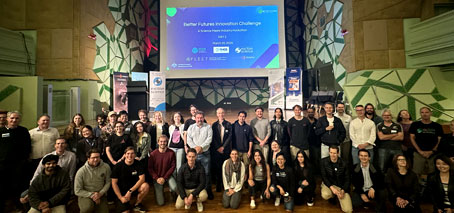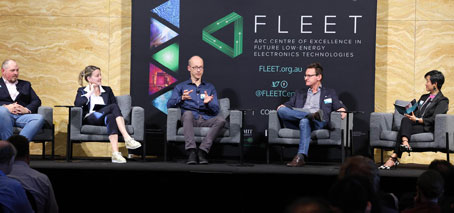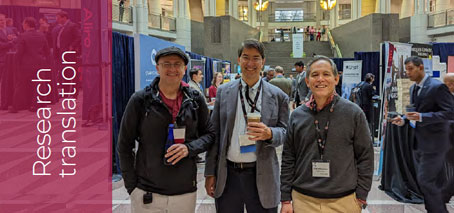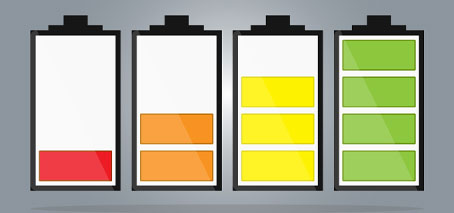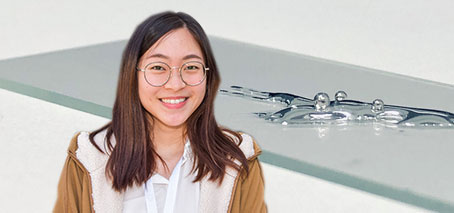Faster ways to respond to emergencies and ultra-sensitive quantum seismometers for earlier detection of earthquakes, were two ideas that emerged from teams of intrepid researchers from five Centres of Excellence who competed in the inaugural Better Futures Innovation Challenge to solve critical industry problems. Industry partners for the deep-tech hackathon had access to researcher skills spanning the fields of physics, …
Meet FLEET innovation-and-industry event
An audience of around 90 gathered for the Meet FLEET event at UNSW earlier this month, comprising researchers, industry representatives and others. A major aim of the event was to serve as a bridge, fostering connections while providing industry professionals and researchers the opportunity to delve into collaborative research and development programs. Meet FLEET also showcased the Centre’s research capabilities …
Beyond imaging: neutron reflectometry of semiconductors and quantum materials
The Challenge How can one “see through” the layers of a dilution refrigerator to study the magnetic flux in a thin film or superconductor at cryogenic temperatures? How can one study and control the high-temperature annealing of nanoscale film heterostructures at 1600 K in a vacuum furnace? The ability to “see inside” components is key to controlling the relationship between …
New technology for ultra-low noise quantum devices
The Challenge Increasingly smaller structures in nanoelectronic devices are desirable from an industry standpoint. Smaller devices lead to increased operation speed, packing density and lower power usage. There is a problem however with making smaller devices; the electrons need to be closer to the surface, and this worsens the electric properties of the device – such as electronic noise. This …
Two-dimensional natural hyperbolic materials
The Challenge Metamaterials are synthetic materials whose electromagnetic properties are determined not by their constituent atoms or molecules, but rather by the specific arrangement of these components, leveraging the assembly of subwavelength meta-atoms. They present several challenges including fabrication complexity, bandwidth limitations, issues with loss and absorption, scalability concerns, the pursuit of multi-functionality, sensitivity to environmental conditions, and considerations of …
Manufacturing advanced quantum materials: Monolayer semiconducting TMDCs
The Challenge Monolayer TMDCs are a unique class of 2D semiconductors, which exhibit properties ideal for future quantum technologies. However, their manufacture and characterisation is time consuming and requires extensive experience. Additional complexity is introduced by stacking monolayers with a high degree of precision. The angle dependence provides tunability of the optical and electrical properties. Our market research discovered FLEET …
Solving for the effective properties of electromagnetic composites
The Challenge Metamaterials = artificial structures with properties that do not occur in nature. They are used to make electromagnetic absorbers and communication devices at microwave, infrared and optical frequencies. A way to accurately predict electromagnetic properties of metamaterials is needed. Predicting metamaterials’ effective or average permeability has been a challenge for over a century. Analytic methods are only accurate …
High-bandwidth vector magnetometry for communication and navigation
The Challenge Navigation and communication in challenging environments (e.g. underground/underwater) requires new technology to offer capability comparable to above-ground options. Such capability would allow for underground mine automation, submarine communication and drone navigation. Investigation into new magnetometer technology requires application of precision bias fields, often with other requirements such as optics, microwaves, etc. Making such magnetic delivery systems constrained and …
High-performing n-type thermoelectrics based on bulk porous topological insulators
The Challenge Most of the power used in society is lost to the environment in the form of waste heat. Thermoelectric (TE) modules can convert waste heat gradients into useful electricity via the Seebeck effect. When run in reverse, such modules can also provide active cooling via the Peltier effect. Bi2Te3 is currently the dominant commercial thermoelectric material for Seebeck …
Safe, affordable and durable Zinc-ion batteries
The Challenge The development and deployment of energy-storage technologies are critical to meet the demands of the stationary global market, which is growing at 24% per year. While lithium-ion battery technology may appear suited, its high cost, unavoidable safety concerns, resource strains and extreme demand/supply imbalance are massive deterrents for mass adoption. We need battery technologies that are inexpensive, absolutely …
High-temperature superconducting electronics
The Challenge Superconducting electronic devices indeed have a broad range of applications, including single photon detectors, Josephson Junction Devices, High-Frequency and RF Electronics, and Superconducting Quantum Bits. However, a notable challenge in the field of superconducting electronic devices is that conventional metal superconductors can only operate at extremely low temperatures, typically only a few Kelvin. Additionally, fabricating electronic devices using …
Scanbot: An STM Automation Bot
The Challenge Scanning Tunnelling Microscopes (STMs) are capable of acquiring images of surfaces with atomic-scale resolution. They accomplish this by scanning an atomically sharp probe across the surface of a sample while monitoring an electric current. Conditioning (e.g. sharpening) of the probe, along with finding regions of interest on a sample are two time-consuming tasks that are currently performed by …
Supercapacitors: The future of energy storage
The Challenge Thin-film supercapacitors offer a solution to the limited energy storage capacity of traditional batteries in portable electronics. They provide rapid energy discharge and recharge capabilities, which is critical for devices like smartphones and wearables. The compact nature of thin-film supercapacitors and their flexibility makes them suitable for miniaturized devices, including medical implants, IoT sensors, and small electronics where …
The Australian Synchrotron: A materials analysis toolkit
The Challenge Development of advanced quantum technologies and devices requires a fundamental understanding of the constituent building block ‘quantum materials’ which underpin their exciting properties Quantum materials require high purity and order (structure and chemistry) Precision measurement techniques are required following growth/fabrication. The Solution The Australian Synchrotron is the southern hemisphere’s brightest source of X-rays. We provide a range of …
Automated sensors for stand-off detection of toxic gases
The Challenge Capability for fast, automated, stand-off detection of toxic gases at the parts per million (ppm) level is required for environmental monitoring, early detection of bush fires, toxic emissions from metal processing or mining. This capability can be used for monitoring the spread of toxic gases and aid in the decision-making capabilities in case of humanitarian disasters. The Solution …
Biosensors for point of care testing
The Challenge Using current technologies, screening of lethal diseases such as cancer is painful (uses body tissue), time consuming and requires infrastructure only accessible to specialist trained personnel at big hospitals or testing facilities. Easy-to-operate, low-cost and fast-sensing of disease markers, directly in human blood, will enable extension of medical screening and monitoring facilities to populations in remote areas with …
Wearable EEG sensor with Epitaxial Graphene
The Challenge Deploying a high-efficiency, non-invasive Brain Computer Interface (BCI) system for hands free control of electronic devices, cognitive monitoring or entertainment applications. Most non-invasive BCI systems use electroencephalograph (EEG) nodes to read out bio-potentials from the scalp. Commercially-available dry EEG electrodes are often made of metals or conductive fabric and typically suffer from high impedance and low signal-to-noise ratio, …
Visible switching coatings for Smart Windows
The Challenge As urban centres around the world grapple with the dual challenge of rising energy demands and the urgent need to reduce carbon emissions, the integration of smart infrastructure becomes pivotal. A significant amount of a city’s energy is consumed by building heating, cooling, and lighting. Innovations like tint-adjusting windows, heat mirrors, and selective light absorbers can drastically cut …
Topological thermoelectric films with controlled porosity
The Challenge There is a high demand for flexible thermoelectric films that can be incorporated into low-energy electronics to recapture waste heat and enable wearable battery-free devices. High performance thermoelectric materials require high electrical conductivity generally being accompanied by low thermal conductivity. However, these two quantities are typically linked with high electrical conductivity resulting in high thermal conductivity. The challenge …
Terahertz frequency switching in graphene
The Challenge The International Energy Agency (IEA) has identified computing, and in particular data centres, as a rising source of energy usage. Energy generation continues to be dominated by the burning of fossil fuels such as gas, coal and oil – all of which produce carbon dioxide (CO2 ), which contributes to the Greenhouse effect and climate change. The Solution …
Towards high-temperature lossless electronics
The Challenge Scientists are continually searching for ways to increase computing power while reducing power consumption. A big step forward would be finding materials that conduct electrons with near-zero resistance at high-temperature and with all their spins aligned in one direction. The Solution Our solution is a layered “sandwich” structure comprising of a …
Aluminium oxides-based LED encapsulant
The Challenge Light-emitting diodes (LEDs) are consumer electronics that play a crucial role in our daily life-from a mobile phone to LED billboards, LEDs are ubiquitous. There are, however, delicate components sitting inside each LED unit that need to be protected in a dry and oxygen free environment. The lifespan of typical LEDs …
New funding to spark collaboration between industry and FLEET students
An exciting partnership between FLEET and APR-intern will fund new route to gain valuable ‘on the floor’ industry experience for FLEET PhD/Masters students, increasing job skills and leveraging Australian scientific expertise in industry, with funding supporting the placement of research students with industry partners. In addition to injecting fresh scientific and problem-solving energy into participating industry workplaces, the program will …
Next-generation low-energy transistors
The Challenge Energy usage for computing has been recognized by the Breakthrough Energy Fund as one of the world’s major problems needing future solutions. Carbon dioxide (CO2) emissions are linked to climate change. While energy production and chemical industries are the major CO2 producers, large data centres and computing technology, in general, are also contributing to CO2 emissions and energy …
Research translation in 2022
Translating FLEET research to industry innovations with societal impact With a goal to help transform Australia’s electronic technologies and work towards research translation outcomes, FLEET is actively building partnerships and links with research and industry organisations working on novel electronic devices and systems. ENGAGING WITH INDUSTRY Progress towards this important goal in 2022 included: Initiating the FLEET Translation Program (see …
Turning up the heat on topological thermoelectrics: FLEET Translation funding towards new chemical synthesis
FLEET funding is supporting the next step in possible translation of thermoelectrics research towards commercialisation in future generators, electronics, vehicles, human-wearable and environmental sensors, and smart electronics Thermoelectric materials offer potential solutions to heat-management challenges common to many electronics technologies. Thermoelectrics are solid-state semiconductors that can convert heat gradients into useful electricity (known as the Seebeck effect). They can also …
Learning to see yourself in an entrepreneur role: Sunrise Innovation Festival
FLEET PhD candidate Maedehsadat Mousavi’s has reported in following attending the Sunrise innovation festival, building on her experiences at the EQUS-FLEET Idea Factory: “Previously, I would have never considered starting my own company or launching a start-up, but now I can see myself considering this future, and how an entrepreneur can have an impact on the world.” FLEET HDR students …
Zinc batteries, cheaper safer better: FLEET Translation Program
FLEET Translation funding is progressing zinc-ion battery technology, which offers decreased costs, safety, and improved environmental outcomes. Current commercial batteries are primarily based on lithium-ion technology, which is expensive and has significant safety concerns owing to incorporation of flammable organic materials. The proposed aqueous zinc-ion battery technology boasts improved safety (no toxic or flammable components), low-cost manufacturing, and recyclability. The …
FLEET translation: extending LED device lifetime with liquid-metal printed oxides
2D oxide-based LED encapsulation extending device lifetime FLEET translation funding is supporting the next step in a liquid-metal printing application with significant commercial promise, in a project being led by RMIT PhD candidate Patjaree Aukarasereenont. Light-emitting diodes (LEDs) play a crucial role in modern society – from mobile phones to LED billboards and home lighting, LEDs are ubiquitous. There are, …
Critical Technologies submission
FLEET has made the following submission towards a review of Australia’s ‘critical technologies’, ie current and emerging technologies critical for Australia today (or could become critical within the next 10 years), aimed at giving Australia a clear competitive advantage, accelerating productivity growth, and creating well-paying jobs. The ARC Centre of Excellence in Future Low-Energy Electronics Technologies (FLEET; FLEET.org.au) is a collaboration between …
- Page 1 of 2
- 1
- 2

